The Bats are Calling: Research at Black Rock Forest
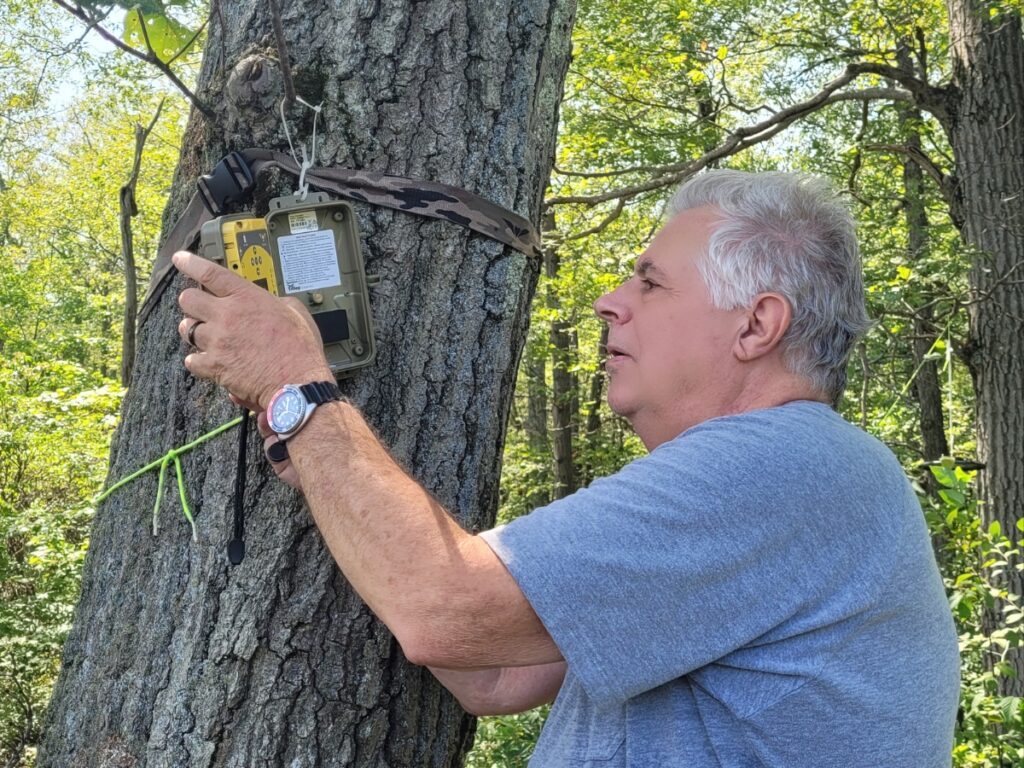
Watching a bat flutter across the evening sky was a common occurrence not so long ago, but a variety of factors have reduced our opportunities to witness these nocturnal acrobats. The first step in helping these important animals persist is knowing which species occur where and how abundant they are. Quantifying bat species presence, their reliance on insects found in aquatic habitats, and how their foraging activity in such areas varies seasonally are some of the research goals of my laboratory and my research efforts within Black Rock Forest.
Nine species of bats are known to occur in New York State, all of which are insectivorous and eight are considered ‘vulnerable’, ‘imperiled’, or ‘critically imperiled’ by the New York Natural Heritage Program. Our most common species is the Big Brown (Eptesicus fuscus); it’s likely the species you’ve seen buzzing around a lamp post or in your attic.
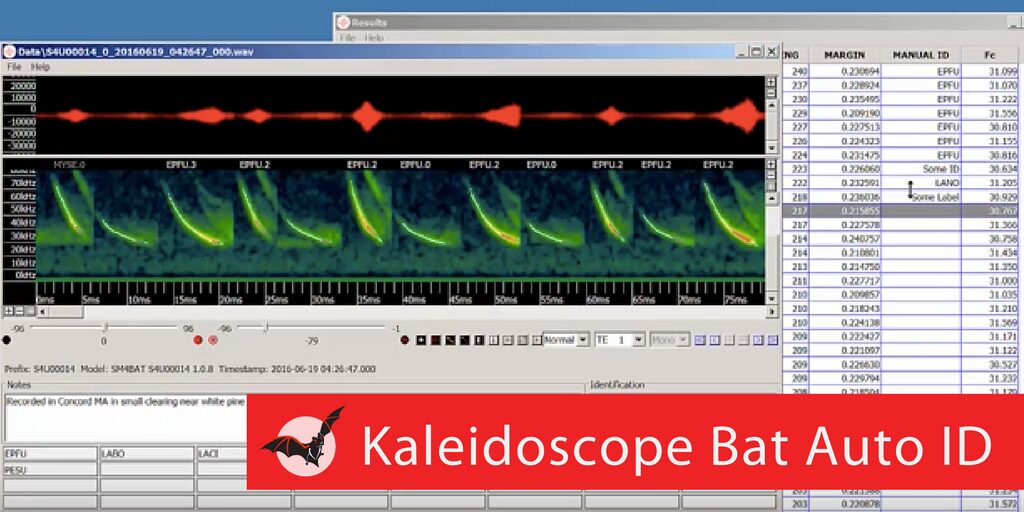
My lab uses passive acoustic monitoring devices that record the “echolocation pulses” or “calls” of foraging bats flying over Tamarack, Sphagnum, Sutherland, and Arthur’s Ponds to identify their species. Bats use echolocation to detect objects in their flight path, including their insect prey. Feeding buzzes are produced when a bat is actively hunting a flying insect and are defined as sequences of calls where the pulse duration, inter-pulse intervals, and frequency decrease.
Research elsewhere suggests that the level of bat foraging activity over water was a strong indicator of nocturnal flying insect biomass. With our recording devices then, we can both document bat species presence and possibly infer aquatic flying insect abundance, which may also indicate the quality of our water body environments.

Since May 2023 we have documented eight bat species foraging within Black Rock Forest, including the rare Little Brown (Myotis lucifugus), Northern Long-eared (M. septentrionalis), Indiana (M. sodalis), Silver-haired (Lasionycteris noctiva-gans), and Eastern Small-footed (M. leibii), as well as the more common Eastern Red (Lasiurus borealis), Hoary (Lasiurus cinereus), and Big Brown. Interestingly, the most com-mon echolocation passes observed were those emitted by the presumably rare Little Brown Bat, accounting for 14.3 to 87.7% of all passes observed during a particular period. The Federally-listed Endangered Northern Long-eared and Indiana were both present at Tamarack Pond, albeit infrequently, accounting for just 2.4 to 5.5% and 7.2 to 9.5% of all passes, respectively. The Eastern Small-footed Bat, a New York State Department of Environmental Conservation “Species of Special Concern”, was detected at Tamarack and Sphagnum Ponds, but apparently rare, comprising only 0.2 to 3.6% of all passes recorded.
We have begun exploring the feeding buzzes recorded at Tamarack, Sutherland, and Arthur’s Ponds. So far, we find that the relative number of feeding buzzes detected at each of these ponds varies greatly between seasons and bat species, with 1,600 feeding buzzes detected at Arthur’s Pond during a single evening!
Our research demonstrates the importance of Black Rock Forest in preserving healthy watersheds that promote populations of flying insects and the natural habitats that our bat community requires. We look forward to furthering our understanding of these invaluable species and want to remind readers to take a moment to admire their local nocturnal acrobats. ❦
— Craig Frank, PhD, Associate Professor and Environmental Science Co-Director, Department of Biological Sciences, Fordham University
Black Rock Forest Summer Science Adventures: A Recap

This summer, Black Rock Forest educators teamed up with local partners to offer a variety of exciting field trips and science programs for students of all ages.
Our partners included Newburgh Enlarged City School District, Town of Newburgh Recreation, City of Newburgh Recreation, MARCS Friends, Newburgh Free Library, and the Newburgh Armory Unity Center, with whom we were able to offer field trips and science programming to students of all ages throughout July and August.
Each week we had a different theme (Art, Hydrosphere, Atmosphere, Biosphere, Pedosphere / Soils, Ecology) with a variety of hands-on activities connected to science. From setting camera traps to studying water quality, our curriculum covered a wide range of topics.
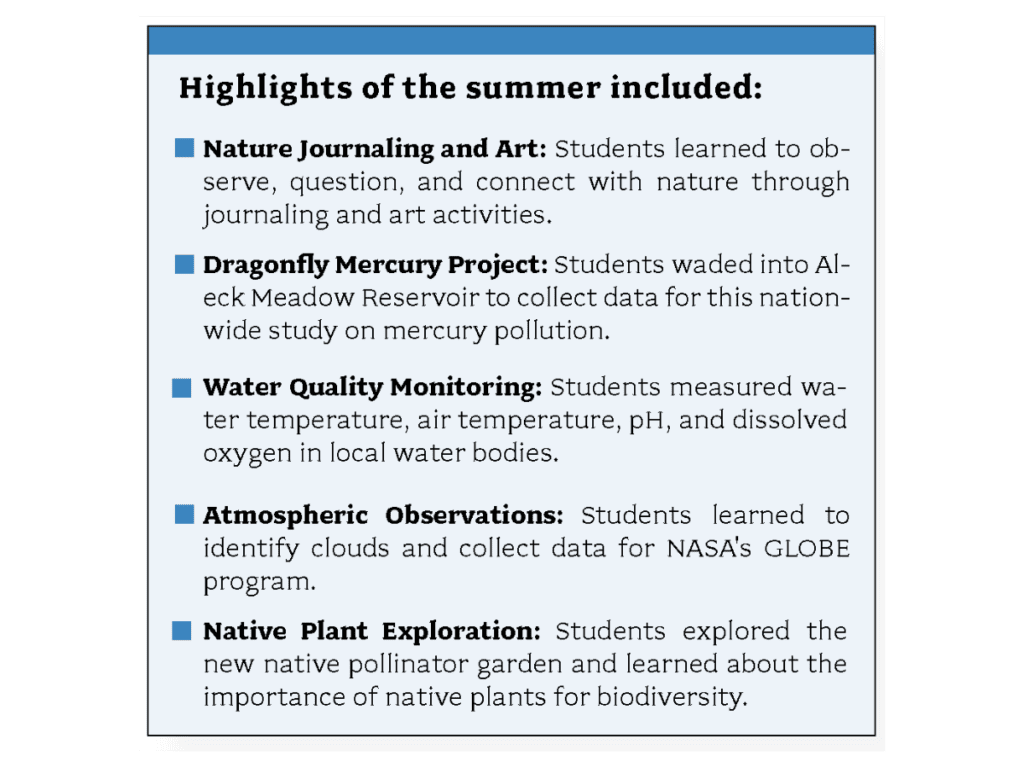
We began our summer programming with an introduction to the Forest, field journaling, and nature art guest artist, Dalia Peralta. Students kept journals, observed, questioned, and connected with nature. They also practiced art techniques like stamping, stenciling, and en plein air paintings around the Forest.
Students loved our Hydrosphere activities this summer, especially the Dragonfly Mercury Project (DMP). DMP is a nationwide study that collects high quality data to better understand mercury pollution. They waded into Aleck Meadow Reservoir to collect data on mercury pollution, which will help protect both humans and wildlife. We also monitored water quality at various locations, recording water temperature, air temperature, pH, and dissolved oxygen. Water quality is a key part of our curriculum, as our water bodies supply clean drinking water to local communities.
Building on previous data collection, students delved into atmospheric conditions and completed the NASA GLOBE cloud protocol. They learned to identify clouds and record atmospheric data. Data were then uploaded to NASA’s database and compared to satellite readings. Students were able to review their findings and see how their observations aligned with satellite data.
To conclude the summer, students explored native plants during hikes and spent time in our new native pollinator garden. They learned about the importance of native plants for pollinator support, and ecosystem health. Students helped prepare the garden by testing soil and organizing beds, and also created art highlighting the benefits of native wildflowers for different pollinators. With over 362 student-days of programming, we’re proud to have provided valuable educational experiences for countless young learners. ❦
— Jessica Schnell, PhD, Director of Education, Black Rock Forest

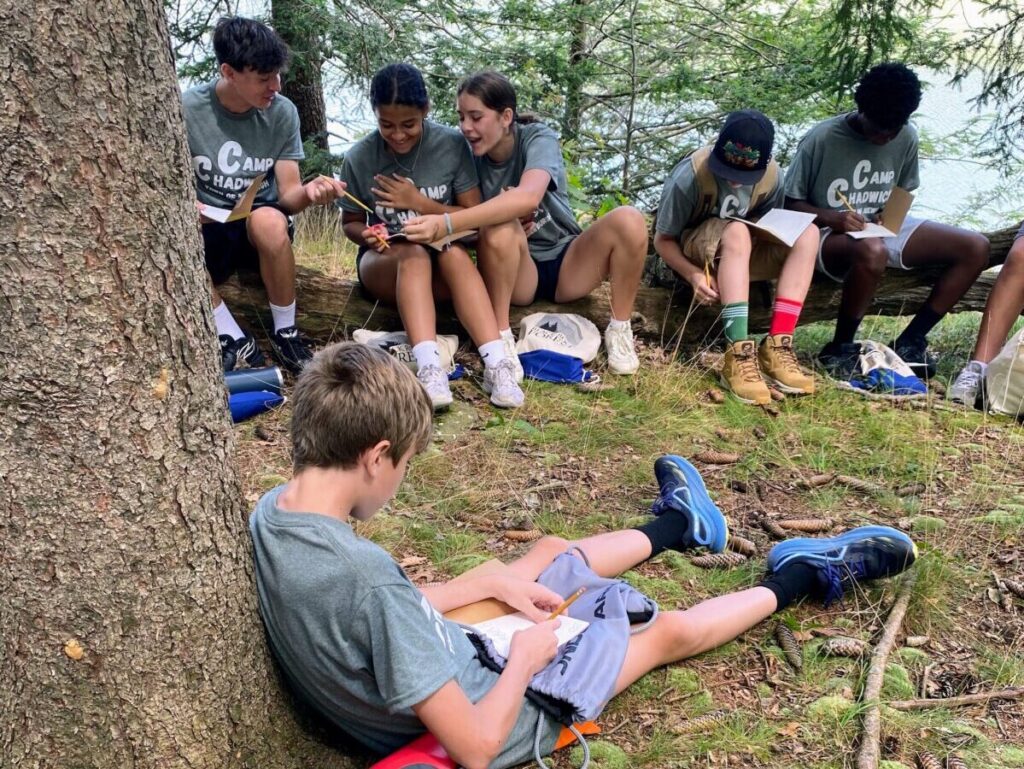


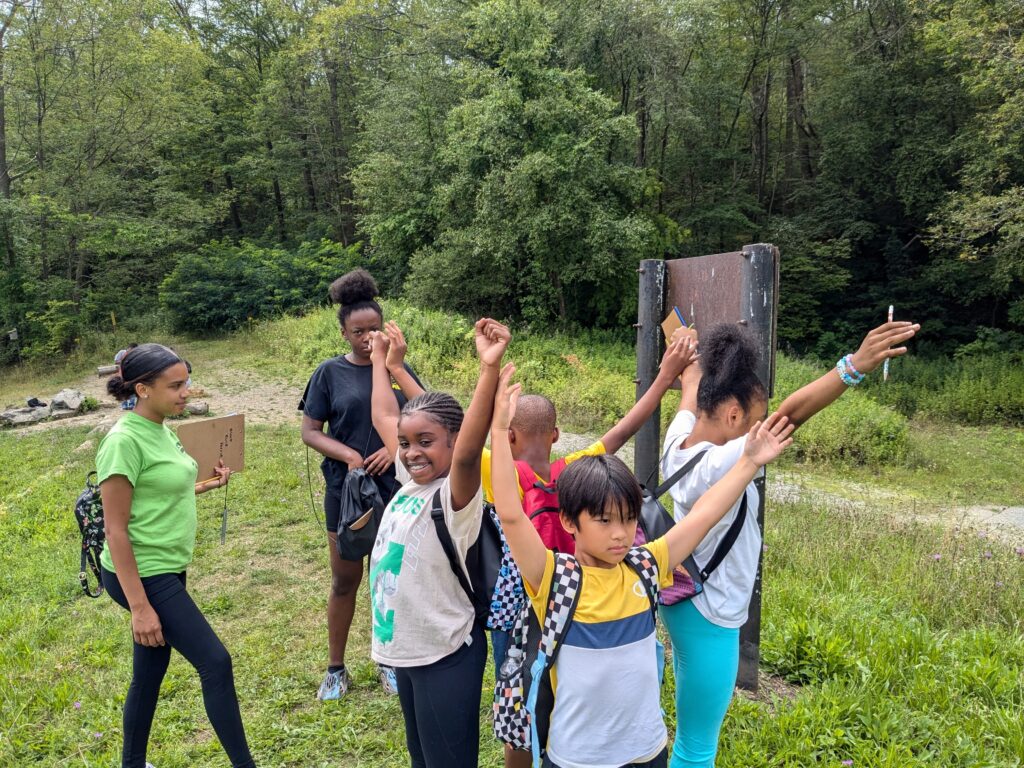
Letter from the Executive Director

Dear Friends of Black Rock Forest,
Over the last year, Black Rock Forest continued to serve as a vital resource for conservation, cutting-edge research, and environmental education. Our small staff has been navigating the long recovery process from last year’s federal disaster and had a few setbacks, including a major structure fire and the loss of long-time board member and chair David Redden. Schools are still adjusting to the post-pandemic world, leading to the departure of a few consortium members, and we’ve had to reduce our own staffing. Yet, through these challenges, we’ve achieved remarkable progress, thanks to the unwavering support of friends, local partners, and donors like you.
Our key accomplishments over the past year include:
- During Summer Science Adventures, we partnered with 6 organizations to provide 362 students-days of summer enrichment for Newburgh kids. Students of all ages explored the wonders of the forest — gaining hands-on experience in ecology, wildlife observation, and the scientific method.
- 285 students participated in our new winter program, Project Feeder Watch and identified 19 different species of birds.
- Dr. Jessica Schnell, Director of Education, hosted 4 days of professional development workshops to provide resources and deliver training that empowered 39 educators to get their students engaged in natural inquiry-based learning.
- Forest Director, Matthew Brady and staff upgraded 22 culverts to make forest roads more resilient to future storm events and flooding.
- Black Forest staff, visiting students, Eagle Scouts, and volunteers planted over 300 native trees and plants, removed thousands of stems of invasive shrubs, and continued work on building a healthier forest.
- Black Rock Forest received funding to begin work on a comprehensive Forest Management Plan. The first step in October 2024 is an updated inventory of forest stands.
- Director of Research, Dr. Scott LaPoint and the research team published 5 peer-reviewed journal articles, sharing our discoveries and facilitating science beyond our institution and members.
- Dr. Hanna Makowski hiked over 400 miles in our forest to make 18,000 (and counting) observations of fall and spring leaf phenology on over 500 trees. She is now working with Redden fellow, Seosamh Radigan, from CCNY and collaborators from the University of Virginia and MIT to sequence sugar maple and red oak DNA from Black Rock Forest and around the Hudson Valley to determine the genetic component of variation in leaf color change.
- The Research team at Black Rock Forest worked to digitize historic maps and published 7 datasets on forest growth, precipitation, forest inventory, and acorn mast. Data from over 90 years of research at Black Rock are now publicly available and fun to explore.
As we look to the year ahead, we are excited to focus on preserving the night-time wonders of Black Rock Forest. With no public access at night, the forest has become a sanctuary where threatened and endangered species can thrive. The Forest becomes alive at night with a symphony of sounds and activities. This newsletter highlights some of the work done on bats at Black Rock Forest, but a myriad of other species also depend on dark nights. Your generous contributions will allow us to support our conservation efforts, deepen our research into these nighttime ecosystems, and offer new educational opportunities for students and visitors to learn about this hidden, nocturnal world.
Please consider donating today to help us continue our mission of conservation, research, and education in the year ahead.
With gratitude,

Isabel Ashton
Executive Director

Forest News in Brief
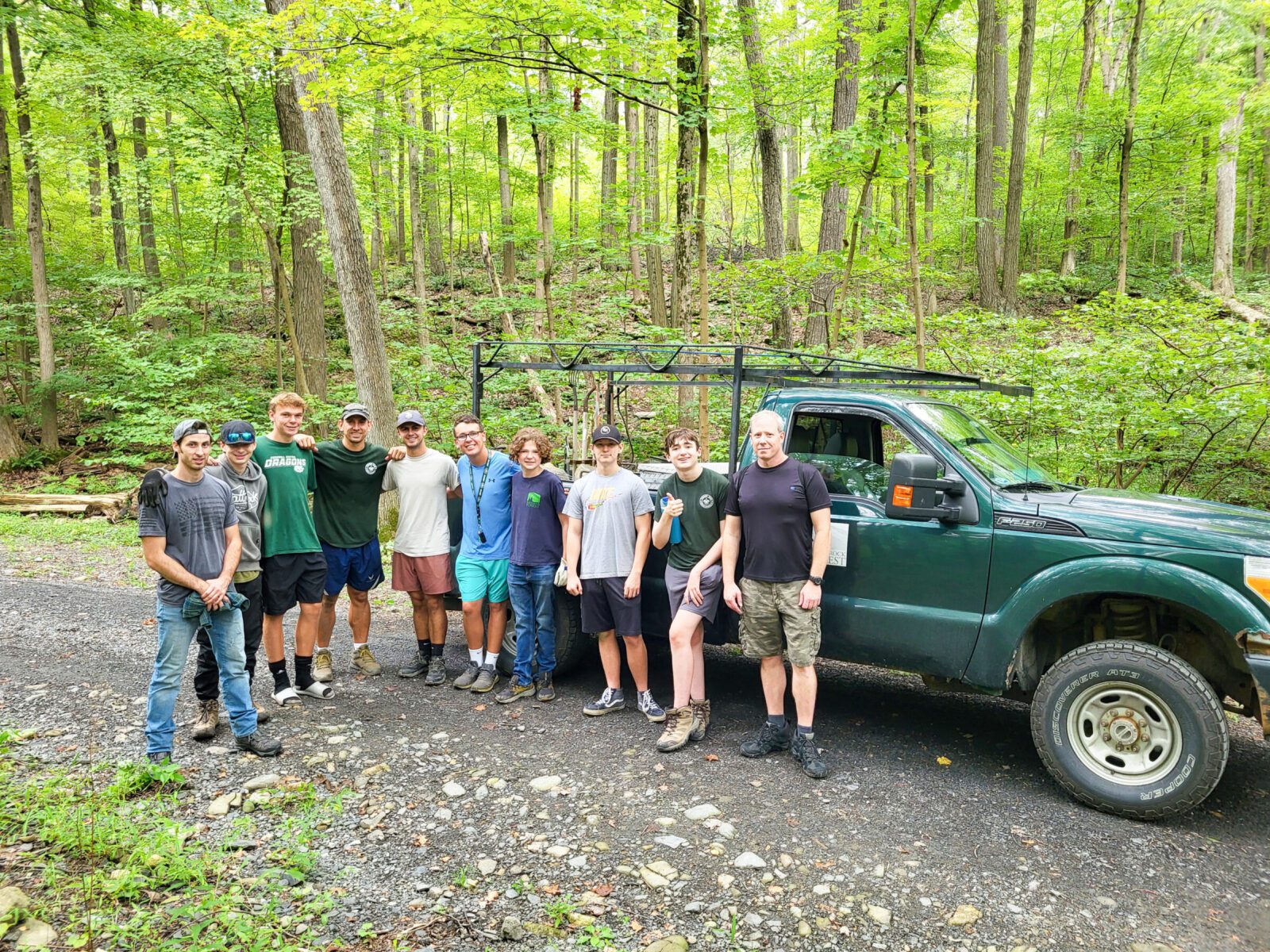
Black Rock Forest is continuing its efforts to improve habitat and support healthier ecosystems by managing invasive species. This summer, we received valuable assistance from Eagle Scouts of Troop 16, 118, and 206, the Lower Hudson PRISM Invasive Species Task Force, dedicated volunteers, and our summer interns, Piper Jenkins and Kristen Kallock. A heartfelt thanks to everyone who contributed to this important work!
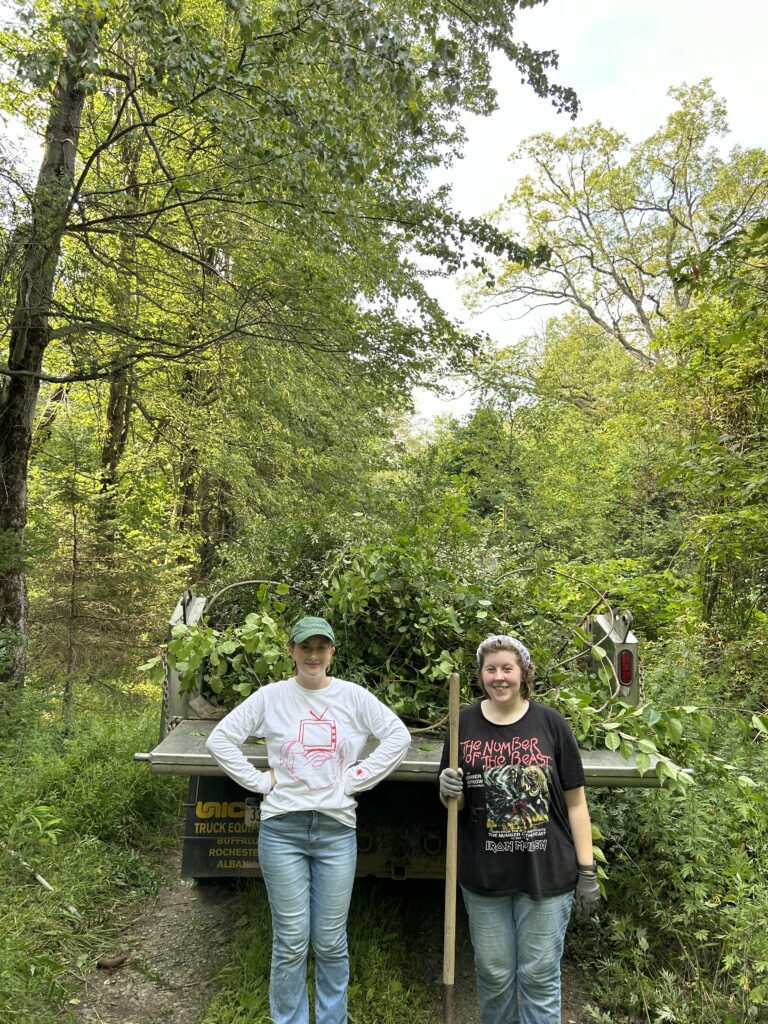
FY2023 Annual Report
Black Rock Forest’s audited financial statements and annual report from fiscal year 2023 are now available. You can find them HERE. We thank all the individual donors and granting agencies – together these contributions made up 35% of our annual income.
Every autumn since 1995, our staff has systematically counted acorns at dozens of sites across the Forest. The goal is to estimate the amount of available energy, in the form of calories, that our oak trees provide to our resident wildlife, including blue jays, rodents, and white-tailed deer. Although what drives oak trees to produce more, less, or even no acorns each year is mostly unknown, the amount of acorns produced is a useful predictor of animal abundance.

Senator James Skoufis presented BRF with a $50,000 grant to purchase a much-needed new tractor. Thank you Senator Skoufis!
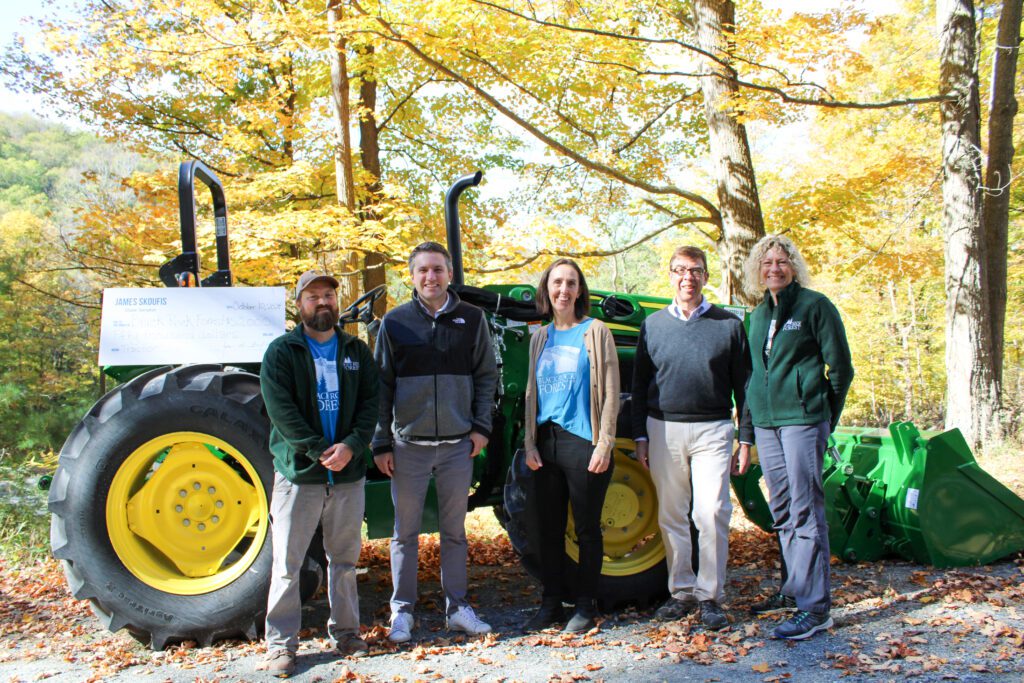

Digital calendar months October, November & December available now!
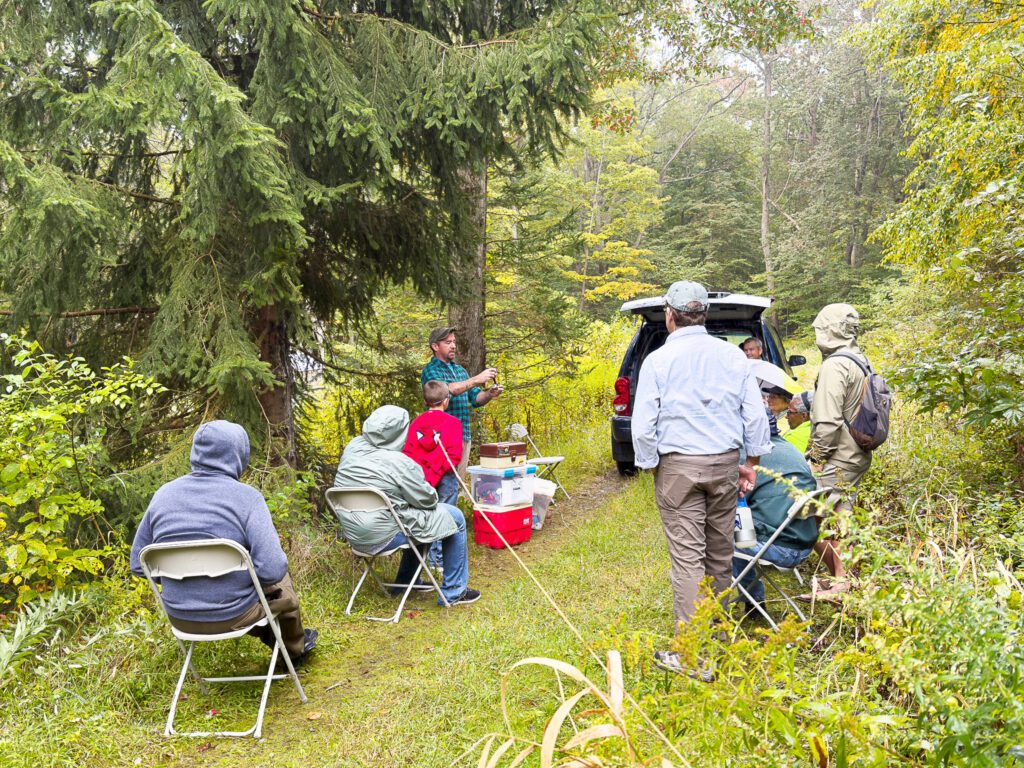
Black Rock Forest hosted its very first Fête & Fun Festival on September 27-28th. The weekend kicked off with an exclusive opportunity to dine under the stars at the historic Stone House. The memorable evening included autumnal views of Authur’s Pond, live music, wood fired pizzas and a bonfire with s’mores. Saturday featured free educational programs for all ages and interests. Activities included classes on pondlife ecology, Black Rock Forest history, native plants, bobcat ecology, conservation collaging, fishing and yoga. Three different guided hikes featured biodiversity, paint & hike, and scenic peaks. The eventful day was capped by a David Redden Conservation Science lecture on wildlife corridors.
The Black Rock Forest Annual Meeting took place in September, bringing to-gether our Board of Directors and Insti-tutional Members. Staff shared highlights of the year’s many accomplishments, and together, we laid the groundwork for ex-citing future plans. We are grateful for the continued support.
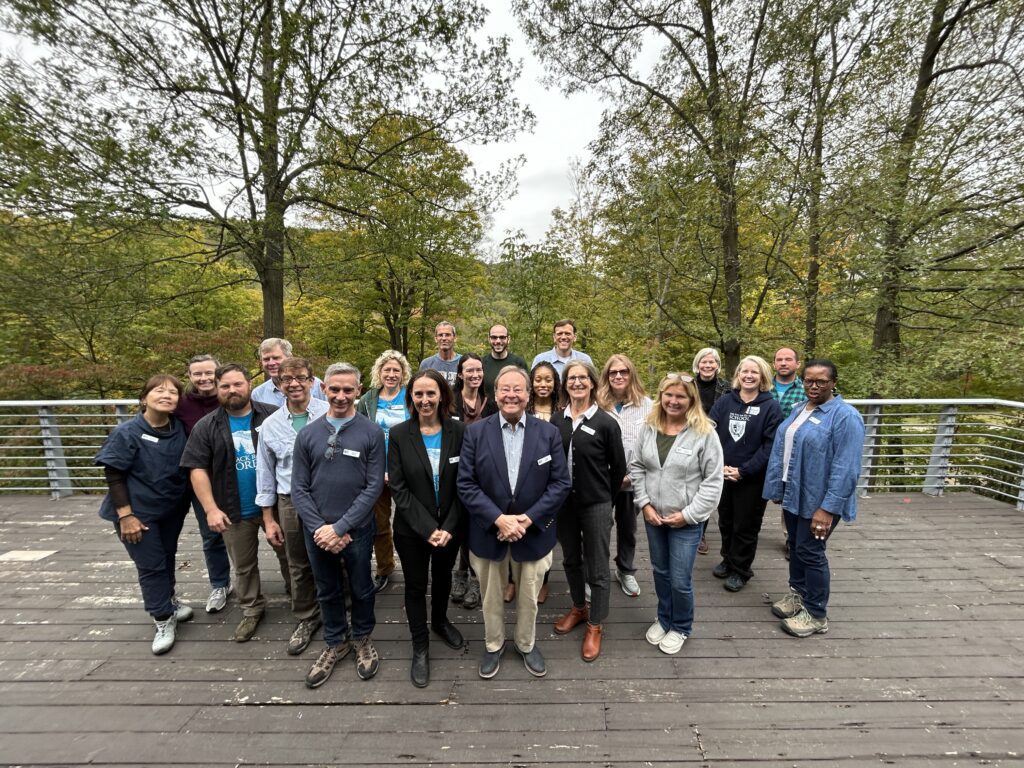
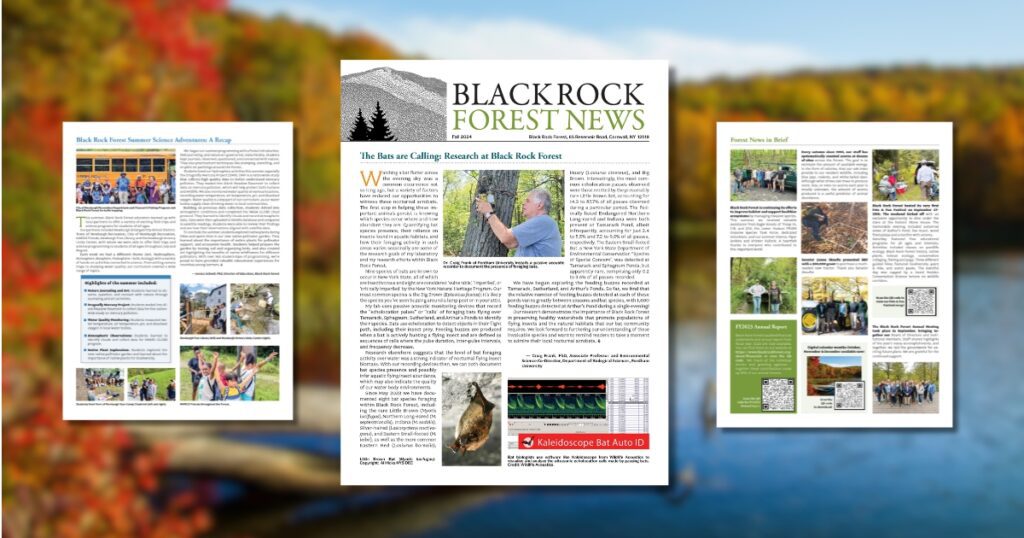
If you would like to download
a copy of this Fall 2024 newsletter CLICK HERE.

